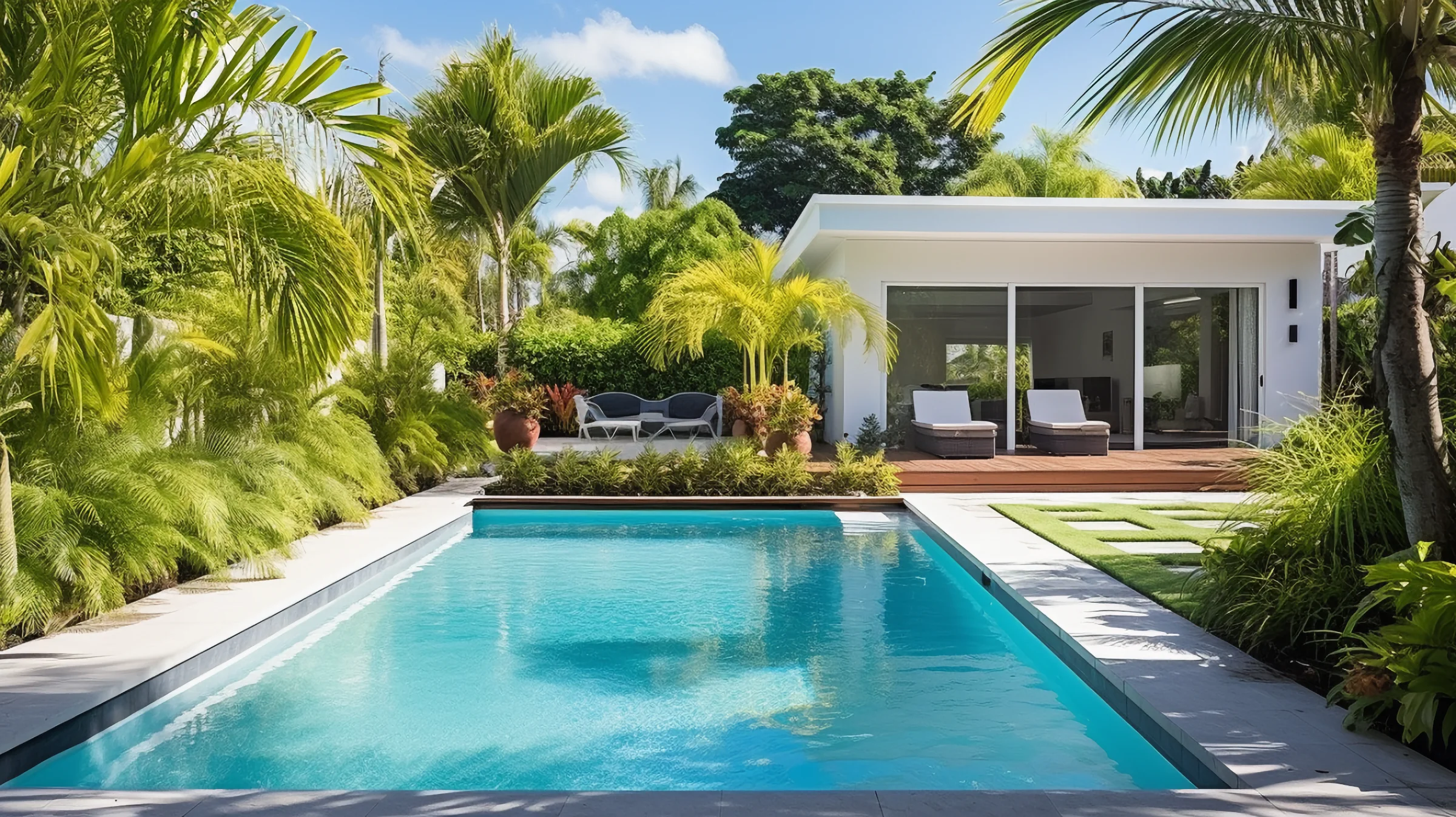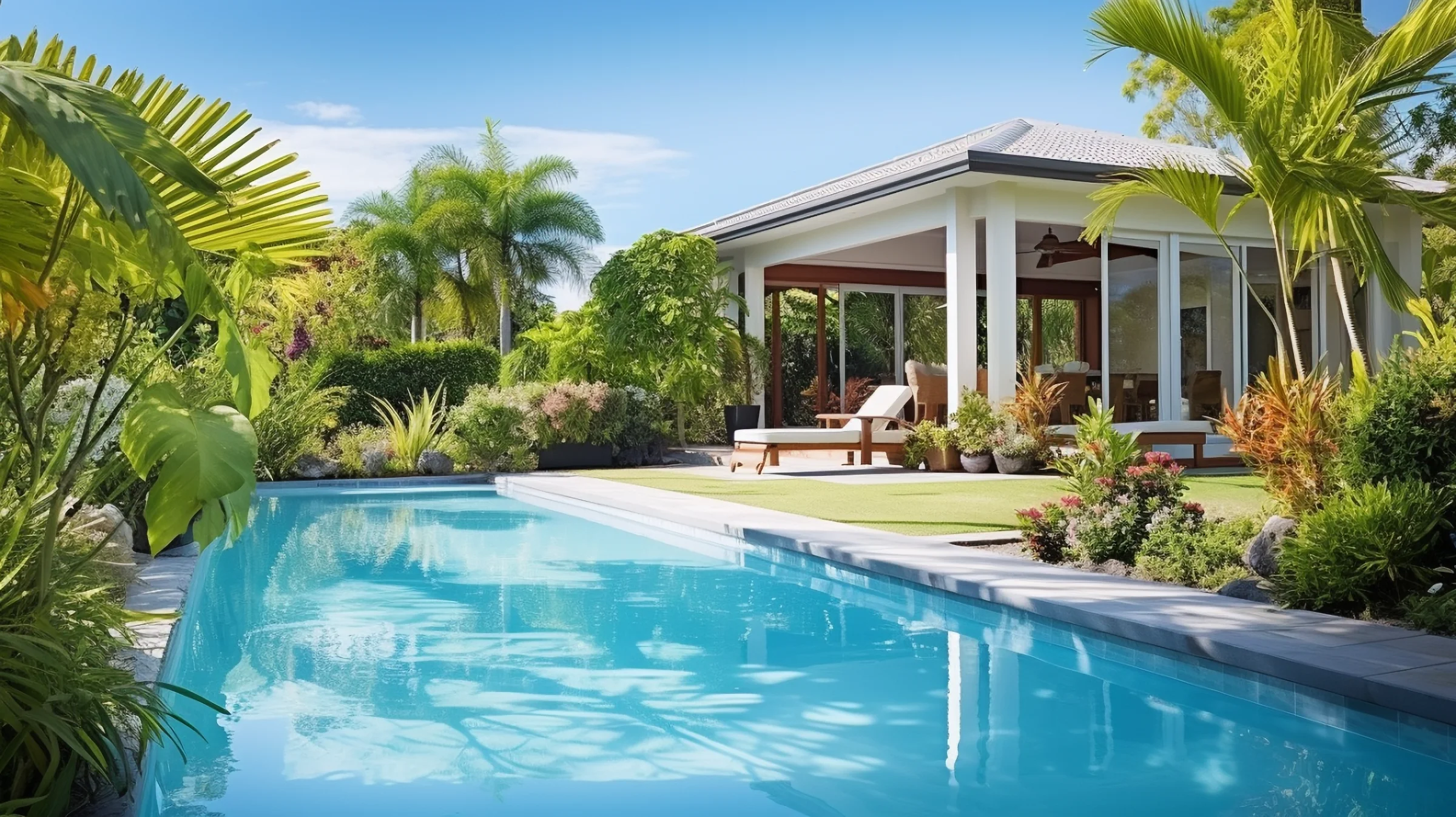Short Summary
- Create a unique and inviting pool area in your backyard with DIY options such as concrete, wood/plastic, natural swimming ponds, above ground pools & more.
- Enhance the look of your DIY pool with decking/paving materials and water features for an oasis-like atmosphere.
- Maintain cleanliness & safety through regular cleaning practices and prompt repairs to ensure long term quality.
DIY inground swimming pool options
DIY inground swimming pools can be an exciting and rewarding project. With several types to choose from, there's a perfect pool for every backyard. Not only will you save thousands of dollars by installing your own pool, but you'll also have full control over the design and materials used.
So let's dive into these pool options and start building your dream pool! Concrete inground pools are a popular choice for those who desire a polished and professional design.
DIY - Above ground
If inground swimming pools just aren't your style or you're looking for a more budget-friendly option, DIY above ground swimming pools may be the perfect solution.
One of the key advantages of DIY above ground pools is that they typically do not require extensive excavation, making them easier and less expensive to install. They also provide a unique addition to your outdoor space, offering endless opportunities for customisation and enhancement. And can be taken with you if you move.
Above ground pools
Vinyl above ground pools are a budget-friendly DIY pool option. These pools come in kits with clear instructions on how to install yourself. You will need a few friends to help hold things!
Elements to consider when installing your own above ground pool is base preparation. You will also need to buy and install the filtration for the pool. And consider fencing regulations. As always, local council regulations need to be followed.
Fibreglass pool kits: A convenient option
Fibreglass swimming pool kits offer a convenient and efficient option for those looking to install a DIY pool in their backyard. These kits include all the necessary components for setting up a swimming pool, making the process simpler and more manageable for homeowners. You can purchase the fibreglass pool kit and then hire a professional installer to do the majority of the work for you, or you can tackle the entire DIY pool project yourself - it's up to you.
By choosing a fibreglass pool kit, you can save money on installation costs and enjoy a long-lasting, low-maintenance pool that adds value and enjoyment to your outdoor space.
Installing fibreglass pool kits
Installing a fibreglass pool kit can be a rewarding DIY project that saves you money on installation fees and local builder expenses. The installation process involves preparing the ground, excavating the area, and positioning the completed pool shell in the hole, and back filling around. Once the shell is filled with water and connected to the appropriate plumbing and electrical systems, your new fibreglass pool will be ready for use.
While installing a fibreglass pool kit may seem daunting, with careful planning and attention to detail, you can successfully complete the project and enjoy your beautiful new pool. And, by doing it yourself, you'll have the satisfaction of knowing that you saved money and created a pool that perfectly suits your needs and preferences.
Enhancing your DIY pool
Once your DIY pool is installed, it's time to think about how to enhance and customise it to create the perfect backyard retreat. From decking and paving to lighting and water features, there are countless ways to add your personal touch and elevate your pool's appearance and functionality.
In this section, we'll explore various options for enhancing your DIY pool, ensuring it becomes a stunning centrepiece in your outdoor space. Start by considering decking and paving options to create a resort-style atmosphere around your pool. Next, explore lighting and water feature ideas to add visual interest and improve the overall ambiance.
With a little creativity and effort, you can turn your DIY pool into an inviting and enjoyable oasis that's perfect for relaxation, entertainment, and fun.
Decking and paving options
Choosing the right decking and paving materials is crucial for creating a visually appealing and functional pool area. Tiles, pavers, and decking can be utilised to enhance the aesthetic of the pool surround, while also providing a safe and comfortable surface for walking and lounging.
When selecting materials for your pool decking and paving, consider factors such as durability, slip resistance, and ease of maintenance. Additionally, choose materials that complement your pool's design and your home's architectural style.
By carefully considering your options and selecting the right materials, you can create a stunning pool area that suits your outdoor space and enhances the overall appeal of your backyard.
Lighting and water features
Adding lighting and water features to your DIY pool can elevate its appearance and functionality, providing a unique and inviting atmosphere for you and your family to enjoy. Underwater lights, fountain jets, and waterfalls are popular options that can create a visually stunning effect.
When installing lighting and water features, it's essential to plan carefully and take into account factors such as the desired type of lighting and water features, the pool's location, and the necessary electrical wiring. Regular inspection and cleaning of the equipment and features will ensure optimal performance and longevity.
With the right lighting and water features in place, your DIY pool will truly shine, providing a tranquil and enjoyable space for relaxation and entertainment.
Pool maintenance tips for DIY pools
Maintaining your DIY pool is essential to ensure it stays clean, safe, and enjoyable for years to come. Regular skimming, sanitising, and verifying the pool overflow feature are crucial steps for sustaining a beautiful and functional pool.
In this section, we'll provide essential tips for cleaning and sanitising your pool, as well as the best solution for inspecting and repairing any damage that may occur. By following these maintenance tips, you can keep your DIY pool in top condition and enjoy countless hours of fun and relaxation in your backyard oasis.
Cleaning and sanitising
To keep your DIY pool clean and sanitary, it's important to establish a regular cleaning routine. This includes skimming debris from the surface, brushing the walls and floor of the pool, and vacuuming to remove dirt and sediment.
In addition to cleaning, it's essential to sanitise your pool to maintain proper water balance and prevent the growth of algae and bacteria. Various sanitising methods are suitable for DIY pools, such as saltwater, magnesium minerals, and other forms of sanitising. Regular testing and adjusting the pH, alkalinity, and chlorine levels will help keep your pool water clean and safe for swimming.
Inspecting and repairing
Regularly inspecting your DIY pool for damage is crucial to ensuring its safety and longevity. Identifying and addressing potential issues before they become more severe and expensive to repair can save you time and money in the long run.
To inspect your pool, look for signs of damage such as cracks, leaks, or deterioration. If you discover any issues, it's important to make necessary repairs in a timely manner. This may involve patching cracks, fixing leaks, or replacing damaged components.
By staying proactive with your pool maintenance and repairs, you can ensure your DIY pool remains a safe and enjoyable addition to your backyard for years to come.
Conclusion
In this guide, we've explored the exciting world of DIY pools, from inground and above ground options to creative materials and enhancements. With the right planning, materials, and maintenance, you can create a stunning and functional pool that offers endless enjoyment and adds value to your home. By taking on the challenge of building your own pool, you'll not only save money but also gain the satisfaction of creating a unique and personalised backyard retreat. So why wait? Dive into the world of DIY pools and transform your outdoor space into the oasis you've always dreamed of!








